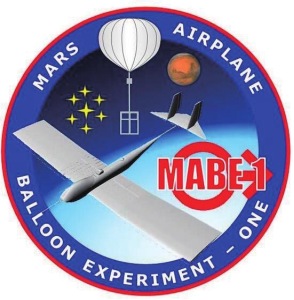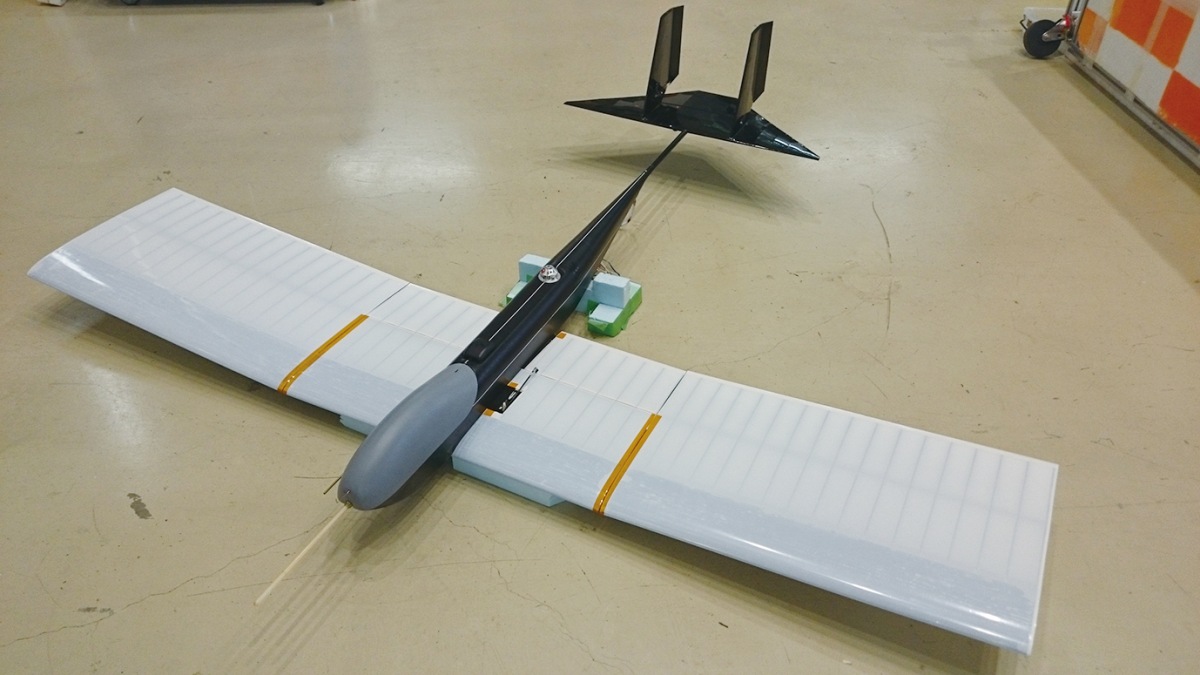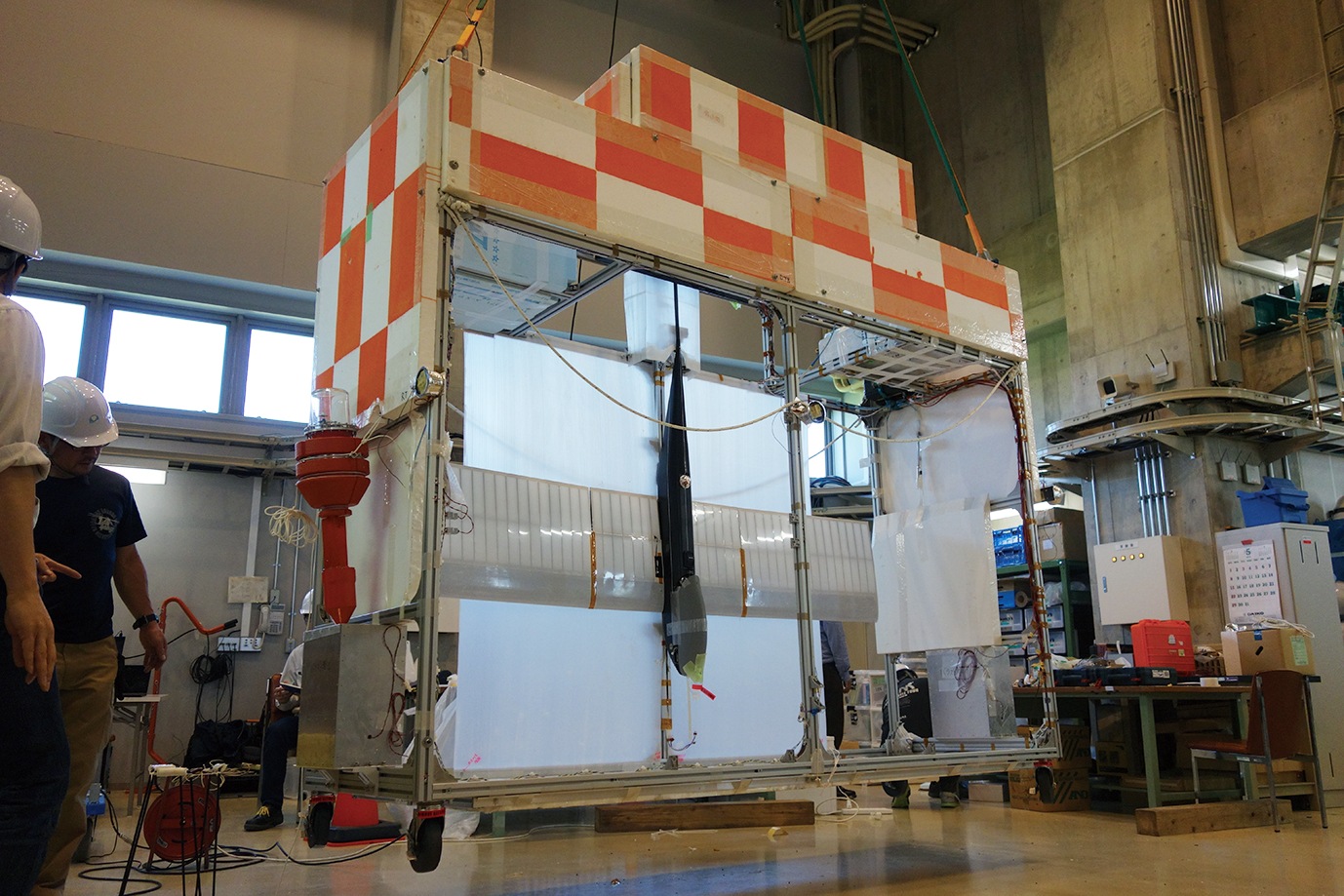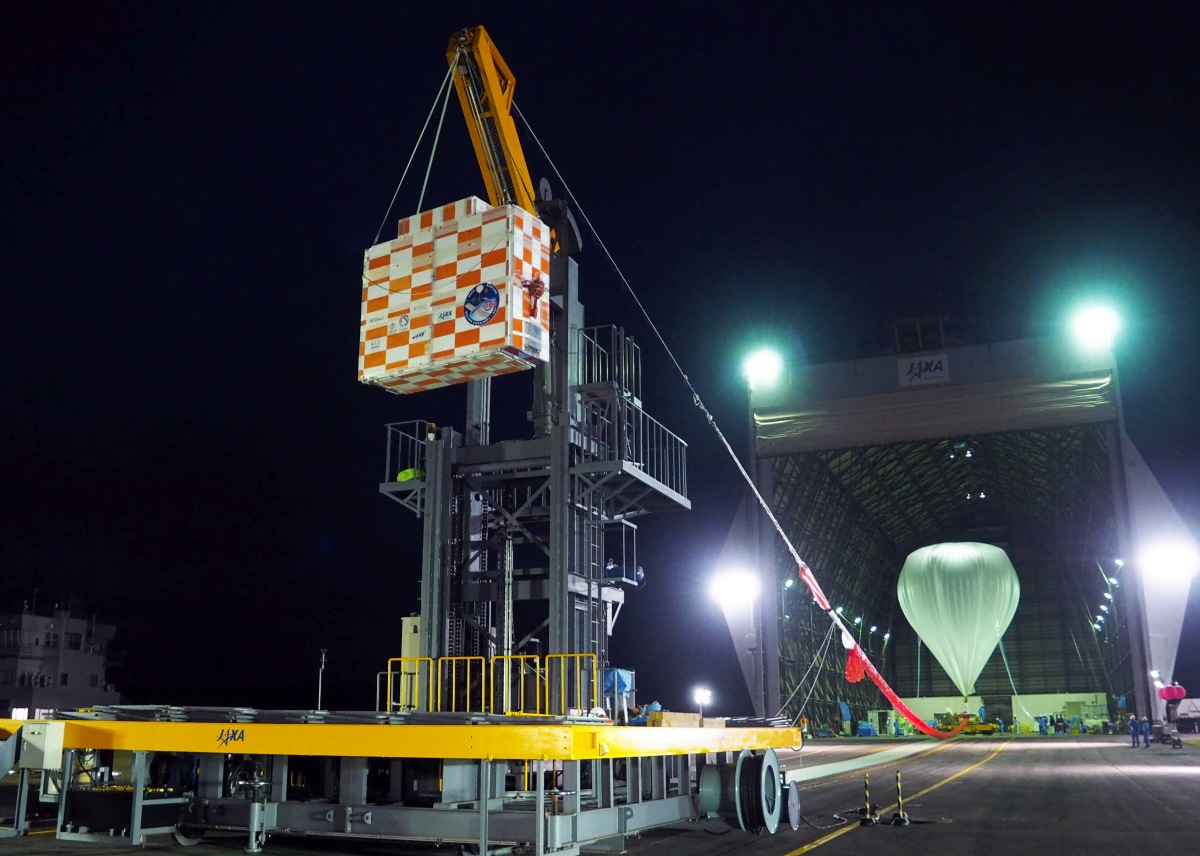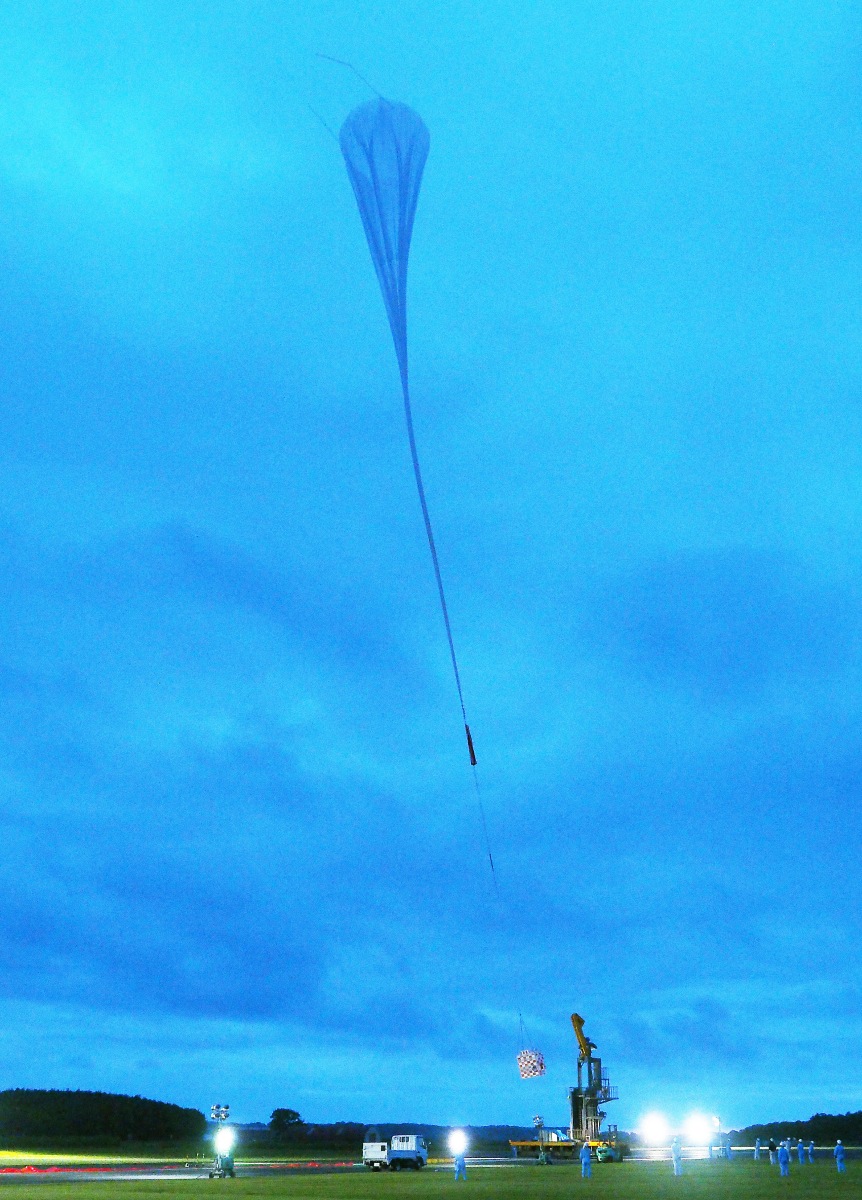Purpose of the flight and payload description
MABE-1 is the acronym of Mars Airplane Balloon Experiment One a development and research effort to study the aerodynamic design of a future plane aimed to fly in the martian atmosphere. The project is led by Japan Aerospace Exploration Agency (JAXA) with collaboration of scientists and technicians of Tohoku University, Kyushu University, Kanazawa Institute of Technology, Tokyo University, Tokyo Metropolitan University, Kanagawa University, Nihon University, Xenocross Aerospace Systems and Kanazawa University
To simulate a flight in the very thin atmosphere of the red planet, the test model is lifted to 36 km by a stratospheric balloon and released from that altitude. Thus, the model is able to acquire aerodynamic data during the gliding descent. This data will serve to improve the model and to incorporate the analysis results into future Mars probe airplane designs.
Details of the balloon flight
Balloon launched on: 6/12/2016 at 3:33 jst
Launch site: Multipurpose Aviation Research Field, Taiki-Cho, Hokkaido, Japan
Balloon launched by: Institute of Space and Astronautical Science (ISAS) / Japan Aerospace Exploration Agency (JAXA)
Balloon manufacturer/size/composition: Zero Pressure Balloon model B100 100.000 m3
Flight identification number: B16-01
End of flight (L for landing time, W for last contact, otherwise termination time): 6/12/2016 at 6:24 jst
Balloon flight duration (F: time at float only, otherwise total flight time in d:days / h:hours or m:minutes - ): 3 h 20 m
Landing site: In the Pacific Ocean 35 km E of Taiki, Japan
The balloon was launched from the Taiki Aerospace Research Field at 3:33 Japan Standard Time (JST) on June 12, 2016. The balloon ascended at a speed of about 300 meters per second to reach 36 km of altitude 2 hours and 25 minutes after launched, while flying above the Pacific Ocean about 45 km east of the Taiki base. After that, at 6:20 JST, a radio-command was transmitted and the flight test aircraft was ejected from the gondola. The balloon and control equipment section were separated by radio command four minutes later, slowly descending to the sea about 35 km east of the Taiki base to be recovered by ship about 7:04 JST.
Althought the balloon flight and release of the airplane proceeded as planned, due to a failure it was not possible to obtain data at all of the scheduled times during descent. Nevertheless, the scientific team was able to achieve the first result of acquiring all aerodynamic data from a flight test at a high altitude of 36 km.
External references
- A study on the effect of blade thickness on low Reynolds number blade characteristics Kyushu University Institutional Repository
- Aerodynamic performance of control surfaces on Mars airplane balloon experiment two Journal of Fluid Science and Technology, 14(3)
- Article about project MABEN in Japanese
- JAXA news of the launch in Japanese
13118If you consider this website interesting or useful, you can help me to keep it up and running with a small donation to cover the operational costs. Just the equivalent of the price of a cup of coffee helps a lot.

